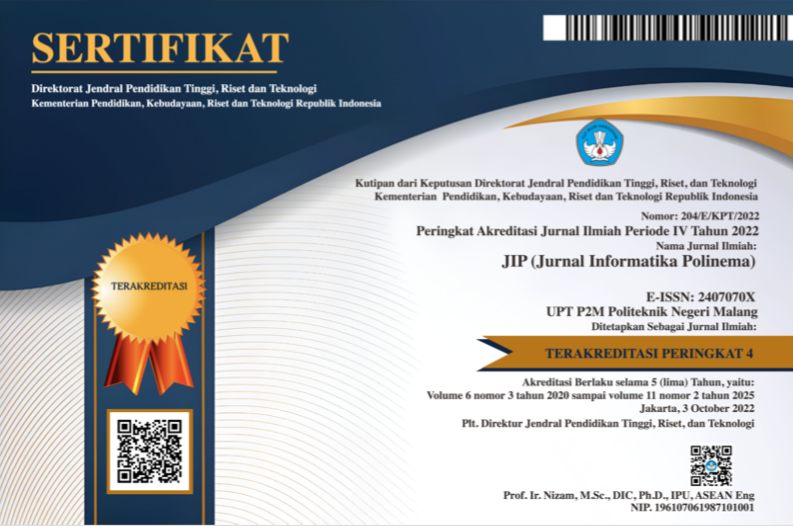PREDICTION OF OZONE (O3) VALUES USING SUPPORT VECTOR REGRESSION METHOD
Abstract
A large number of motor vehicles that cause congestion is a major factor in the poor air quality in big cities. Ozone (O3) is one of the main indicators in measuring the level of air pollution in the city of Surabaya to find out how air quality. Prediction of Ozone (O3) value is important as a support for the community and government in efforts to improve the air quality. This study aims to predict the value of Ozone (O3) in the form of time series data using the Support Vector Regression (SVR) method with the Linear, Polynomial, RBF, and ANOVA kernels. The data used in this study are 549 primary data from the daily average of ozone (O3) value of Surabaya in the period 1 July 2017 - 31 December 2018. The data will be used in the training and testing process until prediction results are obtained. The results obtained from this study are the Linear kernel produces the best prediction model with a MAPE value of 21.78% with a parameter value 𝜆 = 0.3; 𝜀 = 0.00001; cLR = 0.005; and C = 0.5. The results of the Polynomial kernel are not much different from the Linear kernel which has a MAPE value of 21.83%. While the RBF and ANOVA kernels each produce a model with MAPE value of 24.49% and 22.0%. These results indicate that the SVR method with the kernels used can predict Ozone values quite well.
Downloads
References
Bonita, O. and Muflikhah, L. (2018) ‘Comparison of Gaussian and ANOVA Kernel in Support Vector Regression for Predicting Coal Price’, 2018 International Conference on Sustainable Information Engineering and Technology (SIET). IEEE, pp. 147–150.
Caraka, R. E., Yasin, H. and Diponegoro, A. W. (2017) ‘Peramalan Crude Palm Oil (CPO) Menggunakan Support Vector Regression Kernel Radial Basis’, Jurnal Matematika, 7(ISSN: 1693-1394). doi: 10.24843/JMAT.2017.v07.i01.p81.
Gupita, S. A. N., Aisjah, A. S. and Arifin, S. (2017) Prediksi Kadar Polutan Menggunakan Adaptive Neouro-Fuzzy Inference System (ANFIS) untuk Pemantauan Kualitas Udara di Kota Surabaya. Surabaya: Departemen Teknik Fisika, Fakultas Teknologi Industri, Institut Teknologi Sepuluh November.
Jacobus, A. and Winarko, E. (2014) ‘Penerapan Metode Support Vector Machine pada Sistem Deteksi Intrusi secara Real-time’, IJCCS (Indonesian Journal of Computing and Cybernetics Systems), 8(1), p. 13. doi: 10.22146/ijccs.3491.
Platt, J. (1998) ‘Sequential Minimal Optimization: A Fast Algorithm for Training Support Vector Machines’, (MSR-TR-98-14).
Sanusi, S. et al. (2014) ‘Downscaling Modeling Using Support Vector Regression for Rainfall Prediction’, TELKOMNIKA Indonesian Journal of Electrical Engineering, 12(8). doi: 10.11591/telkomnika.v12i8.6195.
Suzuki, Y. et al. (2014) ‘Proposal to Sliding Sindow-based Support Sector Regression’, Procedia Computer Science - Science Direct. Elsevier Masson SAS, 35, pp. 1615–1624. doi: 10.1016/j.procs.2014.08.245.
Tim Penyusun (2014) Laporan Status Lingkungan Hidup Daerah (SLHD) Kota Surabaya. Surabaya: Badan Lingkungan Hidup.
Vijayakumar, S. and Wu, S. (1999) ‘Sequential Support Vector Classifiers and Regression’, International Conference on Soft Computing, 86(February), pp. 610–619. Available at: http://citeseerx.ist.psu.edu/viewdoc/download?doi=10.1.1.60.8325&rep=rep1&type=pdf.
Wahab, M. A. (2017) ‘Interpolation and Extrapolation’, Topics in System Engineering. doi: 10.1201/9781315120195-4.
Copyright (c) 2021 Chasandra Puspitasari, Nur Rokhman, Wahyono

This work is licensed under a Creative Commons Attribution-NonCommercial 4.0 International License.
Copyright for articles published in this journal is retained by the authors, with first publication rights granted to the journal. By virtue of their appearance in this open access journal, articles are free to use after initial publication under the International Creative Commons Attribution-NonCommercial 4.0 Creative Commons CC_BY_NC.
















